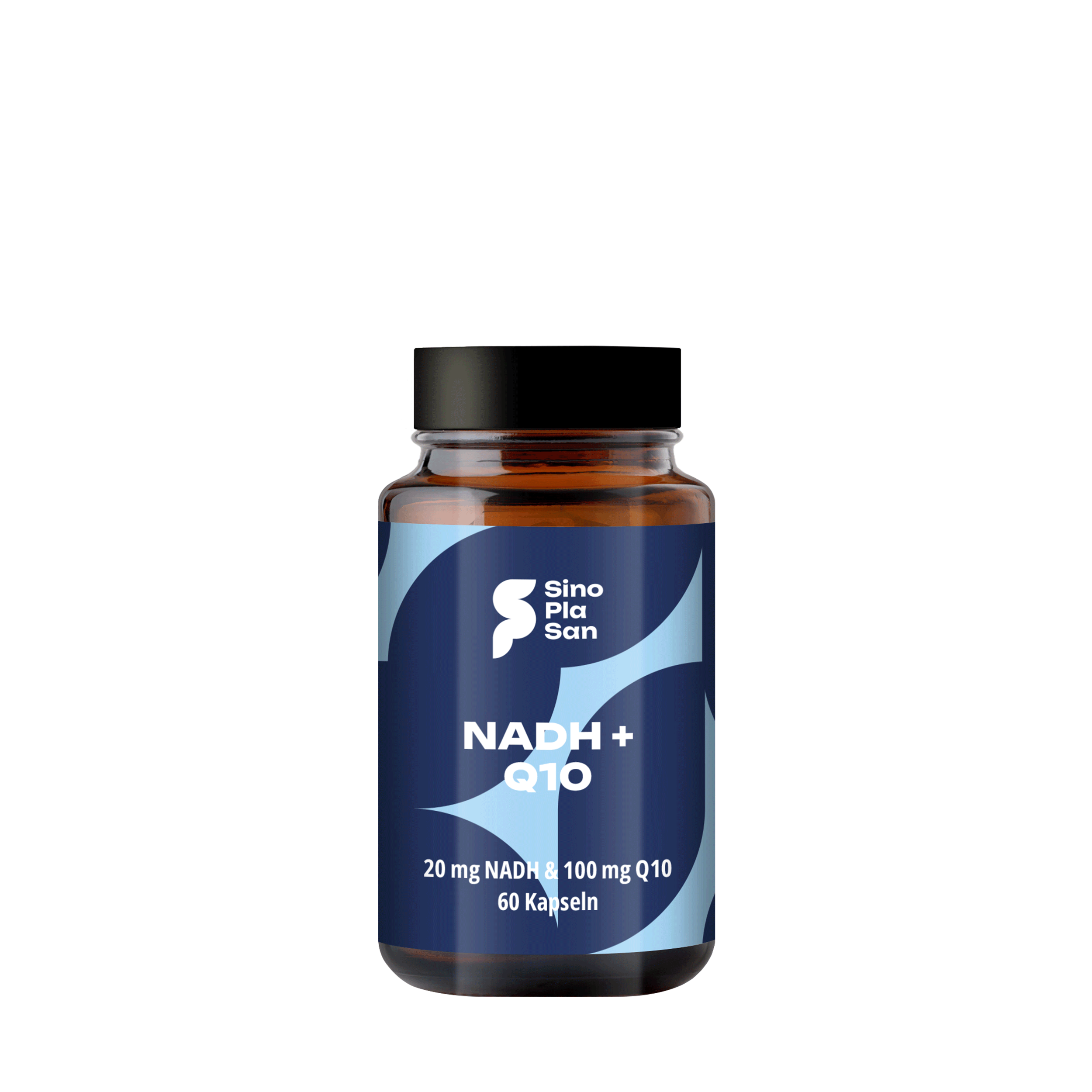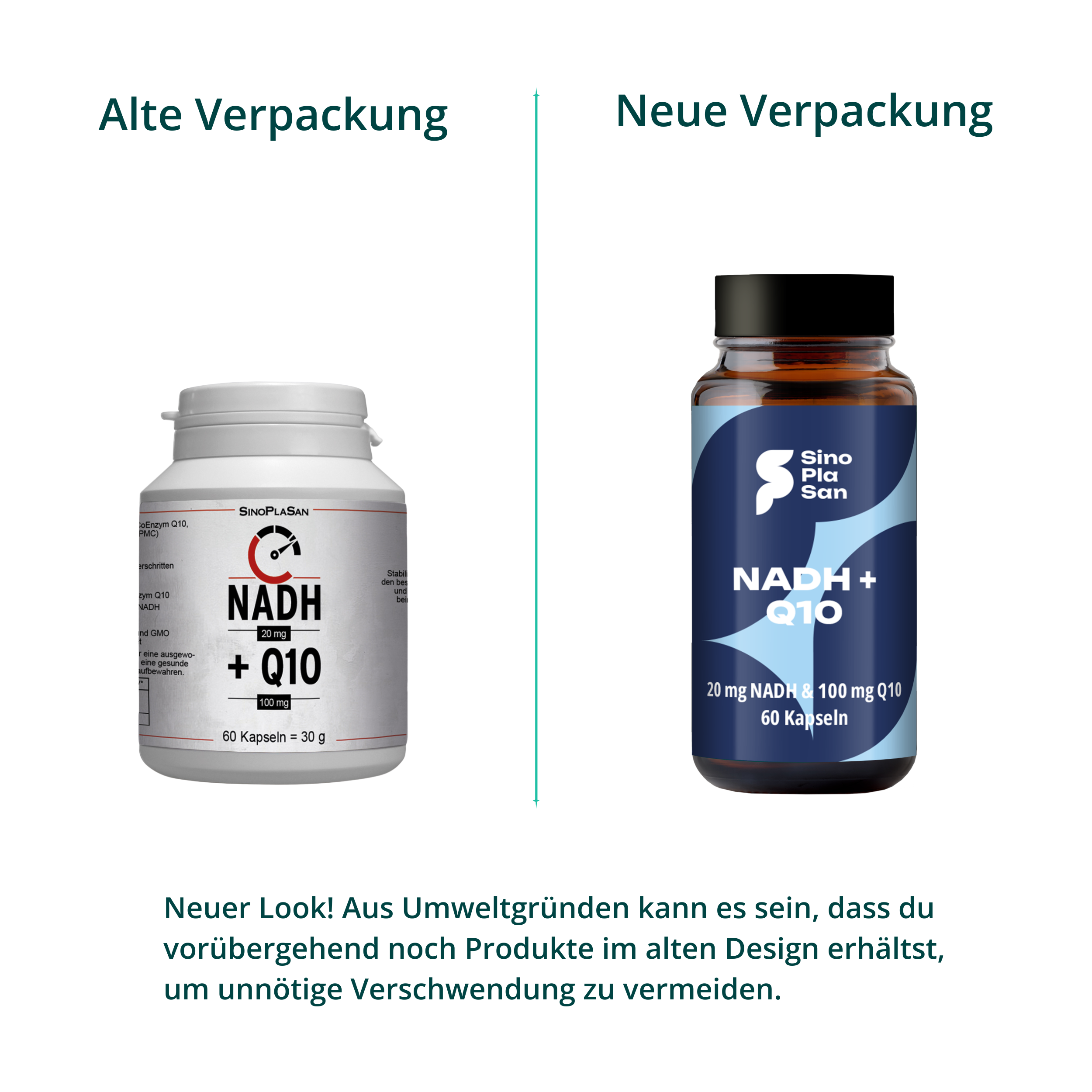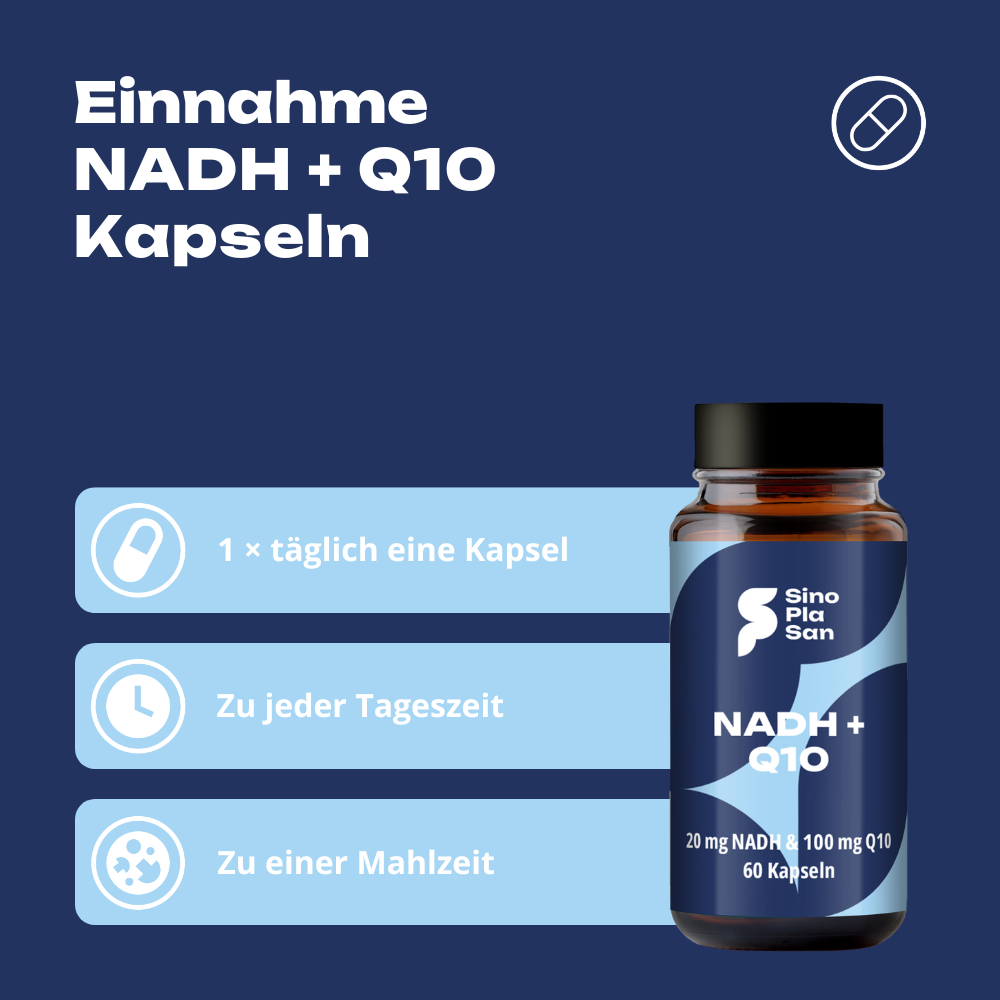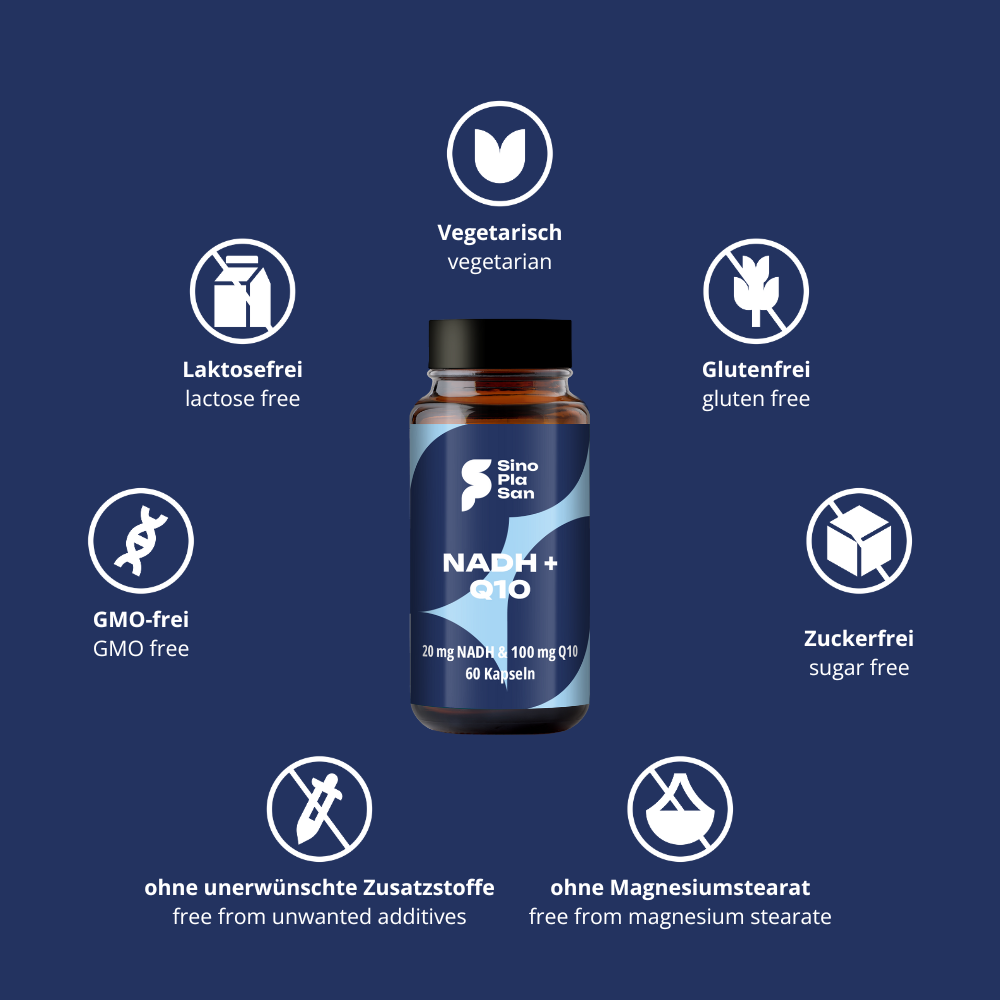



NADH 20 mg + Q10 100 mg 60 capsules
Tax included. Shipping calculated at checkout
Powerful enzyme combination: NADH and Q10
Powerful enzyme combination: NADH and Q10.
NADH is the biologically active form of vitamin B3. The B vitamins play a crucial role in numerous essential bodily functions and are significantly involved in many important metabolic processes.
Powerful enzyme combination: NADH and Q10
Powerful enzyme combination: NADH and Q10.
NADH is the biologically active form of vitamin B3. The B vitamins play a crucial role in numerous essential bodily functions and are significantly involved in many important metabolic processes.
-
gluten free
-
lactose-free
-
GMO-free
-
without undesirable additives
-
sugar free

NADH 20 mg + Q10 100 mg 60 capsules
Sale price45,00 €
(1.500,00 € / 1
kg)


questions and answers



